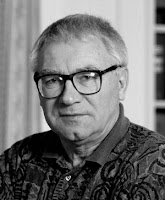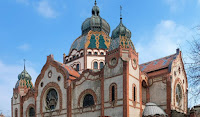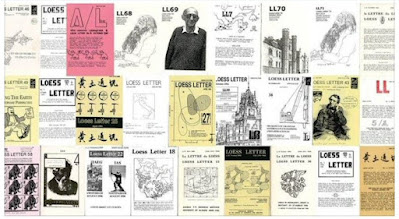Tuesday 2 November 2021
John Hardcastle in England
Monday 23 August 2021
Travels in a Golden Age 2006-2020: From the Marsigli loess conference at Novi Sad in 2006 to the onset of the Covid-19 pandemic. Recent history. A tribute to KOHD
Its an arbitrary Golden Age- a Golden Age of Loess Scholarship and Loess Investigation. A very subjective view of developments in East-Central Europe and the Danubian Region and a record of events offered as Recent History. Following James Boswell and not letting important events slide unrecorded into obscurity. Its a developmental blog and will appear in bits and pieces [please feel free to add any observations or comments or thoughts or musings].
After the great LoessFest in 1999 Loess activity slowly accelerated in East-Central Europe and launched into glorious splendour at the Marsigli Loess Conference in Novi Sad in 2006- which was beautifully recorded in Quaternary International no. 198 [a nod here to Norm Catto, editor of QI who was a key contributor to this particular Golden Age].
'Loess in the Danube Region and Surrounding Loess Provinces: The Marsigli Memorial Volume'. Editors: Slobodan Markovic, Ian Smalley, Ulrich Hambach & Pierre Antoine. Quaternary International 198, 1 April 2009.
In outline here is the pattern of the Golden Age:
2006 Marsigli NS1
2007 Krems- visit the famous rifle-range; main INQUA at Cairns in Australia
2008 DEUQUA Wien; special session 'Danube Loess'
2009 Loess Fest 2 at UNS (NS2). Ten years after the great Heidelberg-Bonn Loess Fest a follow up event at Novi Sad.
2010 GeoTrends NS3
2011 Wroclaw Ukraine Birds: INQUA 18 in Bern
2012 ED80 NS4- celebrations for Edward Derbyshire
2013 Leicester Loess
2014 Kukla LoessFest Wroclaw
 |
2015 INQUA 19 in Japan
2016 2M Modelling & Mapping NS5
2017 Wroclaw GeoTrends 2
2018 NS6 Natural Hazards
2019 INQUA 20 Dublin
2020 the plague arrives
Details will be added in an arbitrary and random fashion [input is needed- this is to be a cooperative history]. To see the Golden Age swelling into being have a look at Google Scholar and examine the publication records of major players- see the great upsurge in creative activity.
The top one is Slobodan Markovic and the lower one is Tom Stevens; the great peak at 2018 is indicative of the Golden Age; the TS result shows the surge beginning in 2006-our chosen arbitrary start date.
2006 The Marsigli conference at UNS Novi Sad; a grand beginning- ice breaker 28.09.06. Dinner at the Petrovaradin Fortress 30.09.06. A two day field trip to Titel; reception at Indjija- the town supports the Stari Slankamen loess section which may eventually become a tourist site, a location for the Loessland Museum.
2009 The 2nd Loess Fest- ten years after the 1st Loess Fest. The 2nd Fest held at UNS in Novi Sad. The special issue of QI was QI 240 The Second LoessFest (2009) ed.by Slobodan Markovic, Norm Catto, Ian Smalley, Ludwig Zoeller. Quaternary International 240 1 Aug.2011.
2010 A special issue of the Central European Journal of Geosciences 'Climatic and Environmental changes recorded in Loess' v.2, issue 1, 01 March 2010 [later the journal became Open Geosciences] ed. Ian Smalley, Slobodan Markovic, Ludwig Zoeller, Janos Kovacs. Papers reprinted in Loess Letter 63, 64 (www.loessletter.msu.edu) . "..it derives from the festival of loess, the 'LoessFest' held at UNS in Vojvodina in Aug/Sept 2009".
2011 Loess Seminar in Wroclaw. The associated QI issue was QI 296: Closing the Gap- North Carpathian Loess traverse in the Eurasian loess belt: 6th Loess Seminar Wroclaw Poland: dedicated to Prof.Henryk Maruszczak. "Between the mountains and the ice". Quaternary International 296 16 May 2013 ed.by Zdzislaw Jary, Norm Catto, Ian Smalley, L.Zoeller, Slobodan Markovic. The field trip was to the east and the party stopped in a quarry in Ukraine, and observed sand martins nesting in the loess banks. This inspired a series of papers relating bird nesting and loess deposits- and some discussion of the 'Heneberg Compromise',
In 2011 LL produced a history of INQUA; this was published as LL65 in April 2011 and is reproduced on the INQUA website, it became the main history of INQUA. A more detailed history should be produced while INQUA pioneers are still available.
2012 The meeting in Novi Sad to honour Edward Derbyshire, the ED@80 meeting. This was a very successful meeting and it produced two special issues full of interesting science (& history): ED@80: Loess in China and Europe- A tribute to Edward Derbyshire. ed.by Slobodan Markovic, Shiling Yang, Norm Catto, Tom Stevens. Quaternary International 334-335, 17 June 2014. Loess and Dust Dynamics, Environments, Landforms and Pedogenesis: A tribute to Edward Derbyshire. ed,by Slobodan Markovic, Lewis Owen. Catena 117, June 2014
A small highlight was the impromptu greeting meeting on Tuesday 25 Sept at the Palermo coffee bar, adjacent to the Voyager Hotel where the Derbyshires were staying; the Palermo did well and a very agreable welcome party was held, with excellent pizza. The Derbyshires arrived ahead of their luggage; Austrian Airlines adding a little spice to the adventure
2012 was the year that the Loess Blog began (Loessground.Blogspot.com) ; electronic communication was taking over from traditional forms. It was at the ED@80 meeting that Randall Schaetzl proposed putting Loess Letter on-line (and this has now been accomplished- loessletter.msu.edu). All 71 issues of Loess Letter are now available online. The field trip went east to see mammoth remains and Roman settlements.
2013 Leicester Loess. In 2013 the INQUA Loess Focus Group moved its annual discussion meeting away from Central Europe- to Leicester in the English Midlands- to the University of Leicester. The associated issue of Quaternary International was QI 372: Loess & Dust: Contributions in honour of Ian Smalley; ed. Slobodan Markovic, Ken O'Hara-Dhand, Sue McLaren. Quaternary International 372 22June 2015. A field trip to look at the very modest loess in Essex.
2016 Loess 2M- Modelling and Mapping; conference at Novi Sad 236-29 August 2016. The special QI 2M Loess Modelling and Mapping; ed. Qingzhen Hao, Christian Zeeden, Piotr Moska, Nemanja Tomic Quaternary International 502A January 2019.
2017 GeoTrends 2 in Wroclaw; 2nd International Conference on Geoheritage & Geotourism; reception at the Meteorological Institute- where is the corkscrew? Guests in the excellent Hostel Figa; papers in the Historical Centre. 22.09.17 Field trip to the south west, near the border with Czechia; magnificent accommodation in the Hotel Sonata. 24 Dobra; forest field trip + mushrooms. Papers> Open Geosciences.
Jary,Z., Owczarek,P., Ryzner,K., Widawski, K., Krawczyk, M., Krzyszkowski, D., Skurzynski, J. 2018. Loess documentary sites and their potential for geotourism in Lower Silesia (Poland). Open Geosciences v10, no.1, 2018, pp 647-660.
Fitzsimmons, K., McLaren, S., Smalley, I.J. 2018. The first loess map and related topics: contributions by twenty significant women loess scholars. Open Geosciences v10, no.1, 2018, pp 311-322.
2018 Natural Hazards in Novi Sad. Reception 05.10.18, Papers 06.10.18, Papers 07.19.18. Field trip to see the Great Hungarian plain, visiting Subotica (possibly the birthplace of Leopold Bloom).
 |
| subotica |
2019 XX INQUA in Dublin. Discussions on loess; the dustcloud of the Golden Age is dispersed as Covid envelops the World. 'The golden dust of Slankamen'.
2020 Daniel Defoe revisited- the Plague Year is here
Monday 28 June 2021
LD4C: Loess Deposits on Four Continents
LD4C: a new enterprise- Loess Deposits on Four Continents. A publication by 'Geosciences' edited by Ian Smalley & Slobodan Markovic; your recent and radical thinking on all aspects of Loess. Go to Webpage https://www.mdpi.com.journal/geosciences/special issues/loess deposits on four continents. Contributions invited.
emails: ijsmalley@gmail.com; slobodan.markovic@dgt.uns.ac.rs










